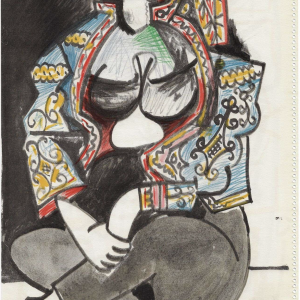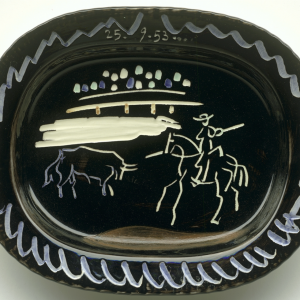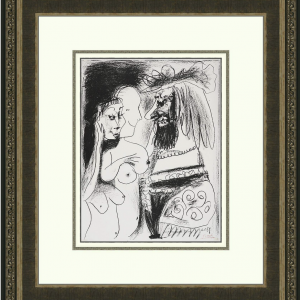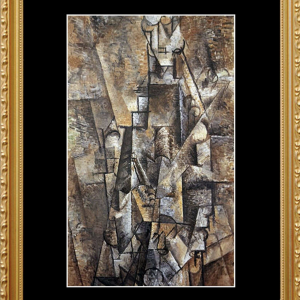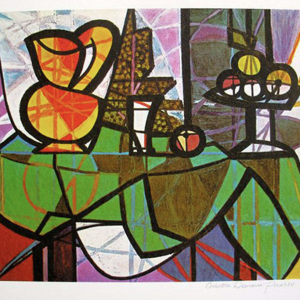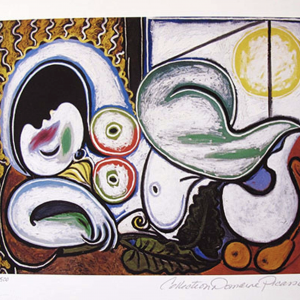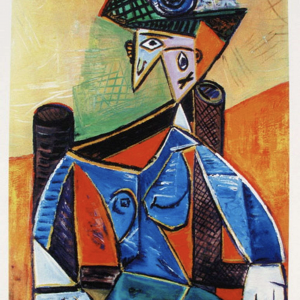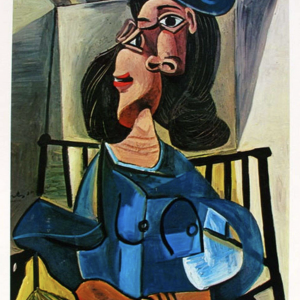Pablo Picasso was one of the most influential and prolific artists of the 20th century, whose revolutionary ideas reshaped modern art. Born in Málaga, Spain, Picasso demonstrated extraordinary talent from an early age, producing sophisticated drawings and paintings as a child. After moving to Paris in 1904, he became a central figure in the city’s avant-garde community.
Picasso’s career is often divided into periods, including the Blue Period (1901–1904) with its somber, melancholic tone, the Rose Period (1904–1906) with its warmer palette and circus themes, and his groundbreaking collaboration with Georges Braque that led to Cubism, a movement that shattered traditional perspective and representation.
Throughout his life, Picasso constantly reinvented himself, working across painting, sculpture, ceramics, printmaking, and stage design. Iconic works such as Les Demoiselles d’Avignon (1907) and Guernica (1937) demonstrate his ability to combine radical formal experimentation with powerful political and emotional statements.
Picasso’s influence was profound, shaping nearly every aspect of modern and contemporary art. By the time of his death in 1973, he had created over 20,000 works, leaving behind an unparalleled legacy as both innovator and cultural icon.
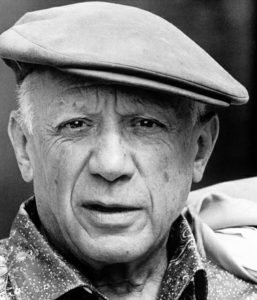
Showing 1–16 of 17 results
